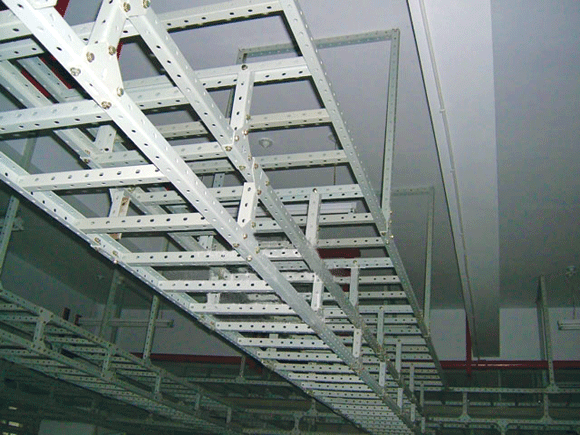Cable Management and Wire Organizer Systems Review
Electronics, Instrumentation & Electrical Database
Cable Management and Wire Organizer Systems Review
Cable management systems are conduits or channels used to organize electrical cables, hoses, and other rigid and non-rigid items using a series of interchangeable flexible links and components. Cable management systems are available from many manufacturers in various materials, sizes, colors, and NEMA or UL ratings to operate in a variety of environments and applications. For example, some cable management systems or conduits are designed to withstand high levels of mechanical vibration, extreme weather, and high humidity conditions.
There are two basic types or categories of cable management conduit systems in use: open and closed. Open systems are roughly analogues to a channel or pipe system with a portion of the conduit removed for easy access to cables. Enclosed systems cover the cables completely and may actually be water or vapor tight. Many enclosed systems have provisions for the removal of a portion of the conduit, other enclosed conduits include a hinged or removable cover system. Others enclosed conduits have feed-through, cutout or snap-through features that hold the conduit covers in place and allow for easy removal.
Cable management system conduits are made from a variety of materials. Material specifications or selection can included as steel, fiber-reinforced nylon, polymers, aluminum, anodized ferrous or non-ferrous metals, and others. Cable management system are available in a variety of sizes with respect to width and height or cable capacity. Conduits are available in a variety shapes and angles transition as well; these configurations can be, rotary, spiral, ninety degree, forty five degree, 180 degrees with motion capabilities, etc.. These type cable management system components are commonly used with robotic mechanisms or with multi-axis (CNC) machine tools.
Many cable management systems include mechanical features that allow the removal of links so that sections or transition features can be added or removed to change the system. Strain relief features are typically included at each end of the cable conduits, these are used to keep cables, hoses, and other conduits components in position and allowing to motion caused by machine action, temperature variations or vibration. Reinforced cable systems are used in rugged environments where contaminants or impact may damage the conduit, such as; Cable management systems used with cranes, material handling, and high-speed transfer systems.
Designing and Planning for Cable Management System:
First a site layout should be facilitated on your facility or installation requirements to determine how to best to route your cable management system. It not always best to conduct the layout od a CAD system, often a walk around and a sketch is the best approach. In fact, often within large facilities, installation and layout is completed before the cable management system is actually dimensionally documented. The process and documentation of the conduits is called "As Built Drawing" . and if normally facilitated by a designer, engineer or drafter. This is a very cost effective approach for many applications.
When designing your layout, plan for both your current cable needs, but your future needs as well. Use a conduit or channel width or height that can handle an increase in capacity. Add in transitions, tee's, or other components where future cable need to branch off.
Selecting the proper main conduit width and height depends on how much cable area you need, how much you expect to add in the future. Keep in mind that for maintenance or other maintainability actions, that a wider than high conduit allows for improved access to existing cables. Should all requisite cables enter at a common access location and travels to a single row of equipment installations or racks, size the main conduit wide enough to accommodate all the cable. Should the cable enter from two or more locations services different rows of equipment racks or access points, each main conduit only needs to accommodate that cable carrying real estate. SHould your design have two conduits that cross or intersect, design such that combined required cable real estate does not exceed the maximum conduit carrying capacity.
Changing the Direction or Path:
When the conduit path requires a change in elevation or height, attempt to use use a 45º Upsweep and 45º Down sweep instead of two 90º Upsweeps (one used to turn up, one to turn down), as this provides a straighter path and keeps conduit from falling out of the vertical channel as cable pile increases.

Cable Management System
Courtesy China Pans
Related